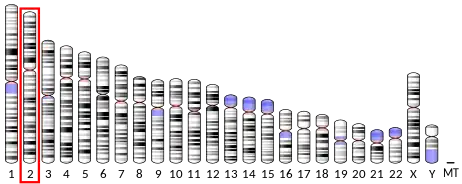PRSS56
Putative Serine Protease 56 (PRSS56) is a serine protease that in humans is encoded by the PRSS56 gene. This protein has been implicated in human eye development.
| PRSS56 | |||||||||||||||||||||||||||||||||||||||||||||||||||
|---|---|---|---|---|---|---|---|---|---|---|---|---|---|---|---|---|---|---|---|---|---|---|---|---|---|---|---|---|---|---|---|---|---|---|---|---|---|---|---|---|---|---|---|---|---|---|---|---|---|---|---|
| Identifiers | |||||||||||||||||||||||||||||||||||||||||||||||||||
| Aliases | PRSS56, MCOP6, protease, serine 56, serine protease 56 | ||||||||||||||||||||||||||||||||||||||||||||||||||
| External IDs | OMIM: 613858 MGI: 1916703 HomoloGene: 79885 GeneCards: PRSS56 | ||||||||||||||||||||||||||||||||||||||||||||||||||
| |||||||||||||||||||||||||||||||||||||||||||||||||||
| |||||||||||||||||||||||||||||||||||||||||||||||||||
| |||||||||||||||||||||||||||||||||||||||||||||||||||
| |||||||||||||||||||||||||||||||||||||||||||||||||||
| |||||||||||||||||||||||||||||||||||||||||||||||||||
| Wikidata | |||||||||||||||||||||||||||||||||||||||||||||||||||
| |||||||||||||||||||||||||||||||||||||||||||||||||||
Genomics
The gene is located on long arm of chromosome 2 (2q37.1). The encoded protein is 603 amino acid residues in length with a predicted molecular weight of 64 597 Daltons.
The protein contains a peptidase S1 domain and possesses trypsin like serine protease activity.
Clinical
Mutations in this gene are a cause of autosomal recessive posterior microphthalmos.[5][6][7] The clinical features of this condition include extreme hyperopia due to short axial length with essentially normal anterior segment, steep corneal curvatures, shallow anterior chamber, thick lenses and thickened scleral walls. The palpebral fissures appear narrow because of relatively deep set eyes. Visual acuity is mildly to moderately reduced, and anisometropic or strabismic amblyopia is common. The fundus of the eye shows crowded optical discs, tortuous vessels and an abnormal foveal avascular zone.
Disease Model
Mice homozygous for an ENU induced mutation show increased intraocular pressure, reduction in eye axial length, and narrow iridocorneal angles. Eyes from individuals with angle-closure glaucoma (ACG) often have a modestly decreased axial length, shallow anterior chamber and relatively large lens, features that predispose to angle closure. Homozygous mice model ACG.[6]
References
- GRCh38: Ensembl release 89: ENSG00000237412 - Ensembl, May 2017
- GRCm38: Ensembl release 89: ENSMUSG00000036480 - Ensembl, May 2017
- "Human PubMed Reference:". National Center for Biotechnology Information, U.S. National Library of Medicine.
- "Mouse PubMed Reference:". National Center for Biotechnology Information, U.S. National Library of Medicine.
- Gal A, Rau I, El Matri L, Kreienkamp HJ, Fehr S, Baklouti K, Chouchane I, Li Y, Rehbein M, Fuchs J, Fledelius HC, Vilhelmsen K, Schorderet DF, Munier FL, Ostergaard E, Thompson DA, Rosenberg T (March 2011). "Autosomal-recessive posterior microphthalmos is caused by mutations in PRSS56, a gene encoding a trypsin-like serine protease". American Journal of Human Genetics. 88 (3): 382–90. doi:10.1016/j.ajhg.2011.02.006. PMC 3059417. PMID 21397065.
- Nair KS, Hmani-Aifa M, Ali Z, Kearney AL, Ben Salem S, Macalinao DG, Cosma IM, Bouassida W, Hakim B, Benzina Z, Soto I, Söderkvist P, Howell GR, Smith RS, Ayadi H, John SW (June 2011). "Alteration of the serine protease PRSS56 causes angle-closure glaucoma in mice and posterior microphthalmia in humans and mice". Nature Genetics. 43 (6): 579–84. doi:10.1038/ng.813. PMC 4388060. PMID 21532570.
- Said MB, Chouchène E, Salem SB, Daoud K, Largueche L, Bouassida W, Benzina Z, Ayadi H, Söderkvist P, Matri L, Hmani-Aifa M (October 2013). "Posterior microphthalmia and nanophthalmia in Tunisia caused by a founder c.1059_1066insC mutation of the PRSS56 gene". Gene. 528 (2): 288–94. doi:10.1016/j.gene.2013.06.045. PMID 23820083.



